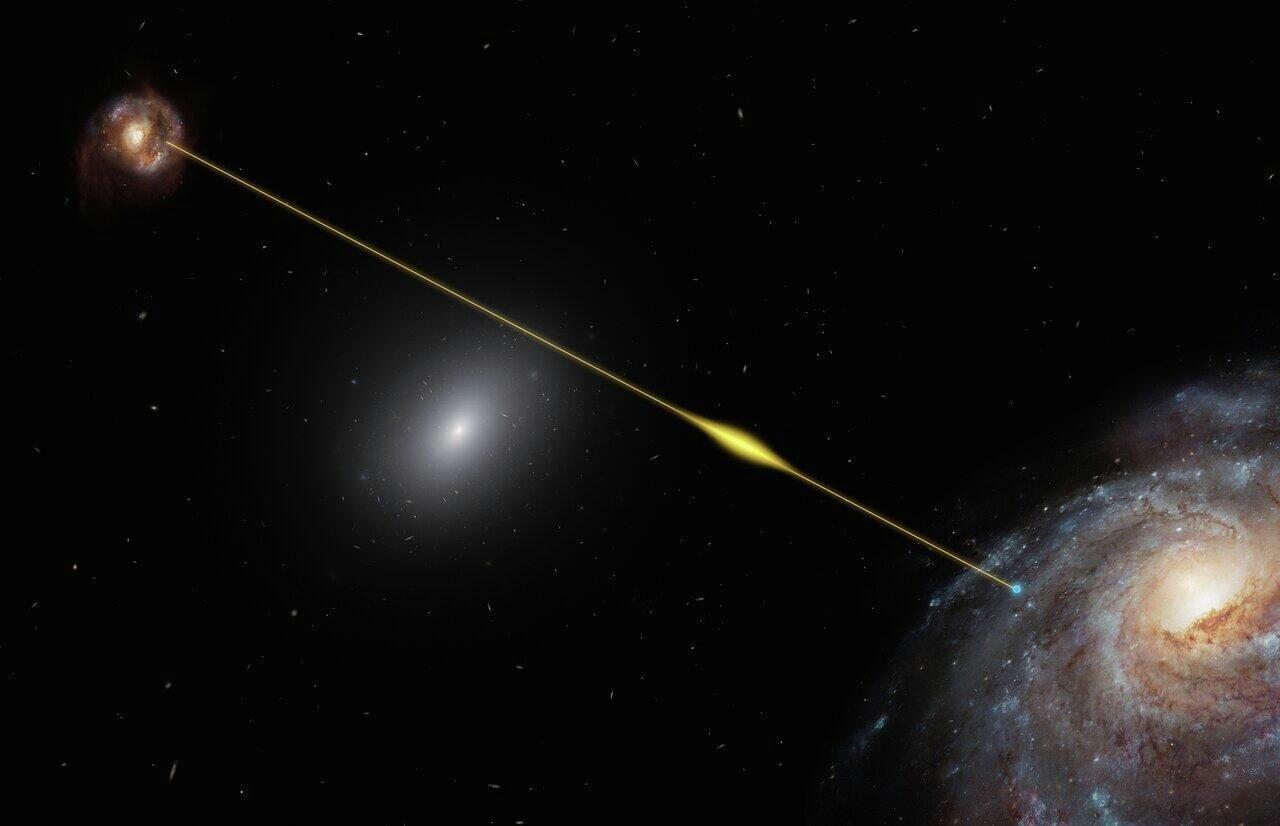Africa-Press – Rwanda. A ‘starquake’ is a theorized event when the surface of a neutron star experiences a sudden shift, not unlike the tectonic plates that cause earthquakes on planetary bodies.
The mysterious and insanely powerful bursts of radio waves that travel across the universe may come from starquakes, a hypothesized event where a star’s surface shakes not unlike the surface of the Earth during an earthquake.
The phenomena, called Fast Radio Bursts (FRB) have remained a mystery to science. FRBs are extremely powerful bursts of radio wave energy that only last for a few milliseconds, but in that time they release as much energy as the sun does in three Earth days.
Typically, FRBs occur sporadically, making them extremely difficult to study. But in recent years a few breakthroughs have increased our understanding of FRBs.
First, scientists discovered several repeating FRBs, allowing astronomers to watch them consistently. Then in 2020, the first FRB from within the Milky Wave was observed, allowing officials to pinpoint the specific star it came from.
That star was a magnetar, a type of neutron star that is the leftover collapsed core of a supermassive star that went through a supernova event. Magnetars are unique among neutron stars for their powerful magnetic field, which makes them the most powerful magnetic object in the known universe.
While stars are often described as a ball of flaming gas, those gravitational forces make the cores of neutron stars the densest objects in the universe.
Astronomers Tomonori Totani and Yuya Tsuzuki of the University of Tokyo looked at 7,000 FRBs from three different sources and compared the energy-time ratio of those bursts with earthquakes and solar flares, which have previously been proposed as a comparison point for FRBs.
The pair found that FRBs have more in common with earthquakes than solar flares, suggesting that the starquake hypothesis is at least plausible.
“It was theoretically considered that the surface of a magnetar could be experiencing a starquake, an energy release similar to earthquakes on Earth,” Totani explained.
“First, the probability of an aftershock occurring for a single event is 10-50 percent; second, the aftershock occurrence rate decreases with time, as a power of time; third, the aftershock rate is always constant even if the FRB-earthquake activity (mean rate) changes significantly; and fourth, there is no correlation between the energies of the main shock and its aftershock,” Totani said, listing the similarities between earthquakes and FRBs. He noted that there were no similarities to solar flares in their analysis.
Officials theorize that the massive magnetic field of the magnetar distorts the star’s shape, causing an outward pull. At the same time, the ultra-dense core of the star pulls inwards, creating a tension that is released in a rupture and quake, possibly releasing a burst of massive energy in the form of an FRB.
While it is unlikely we will ever see an FRB up close, Totani says it can help us understand more about the universe or even quakes on Earth. “By studying starquakes on distant ultradense stars, which are completely different environments from Earth, we may gain new insights into earthquakes,” or even “the fundamental laws of physics,” Totani said.
For More News And Analysis About Rwanda Follow Africa-Press






